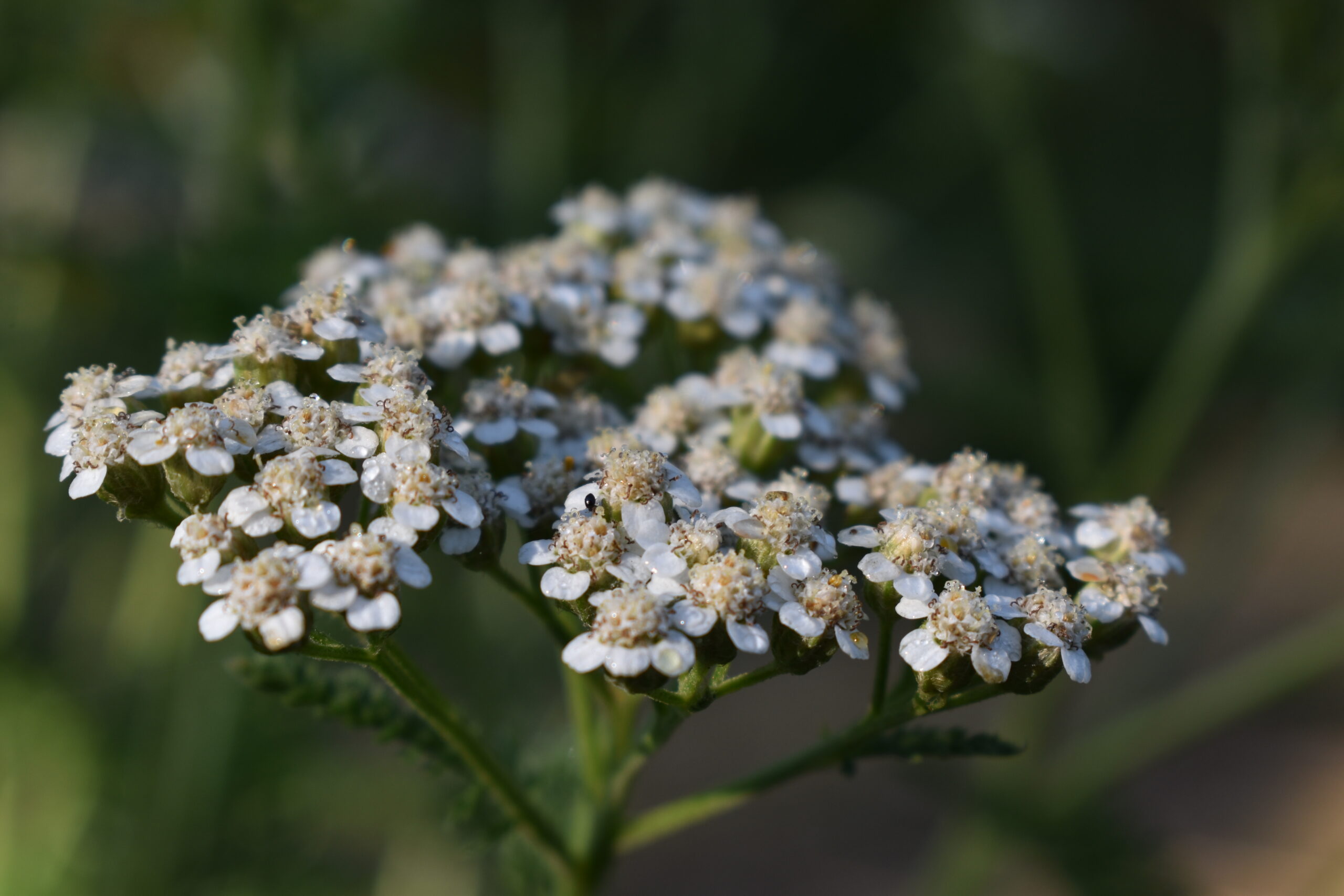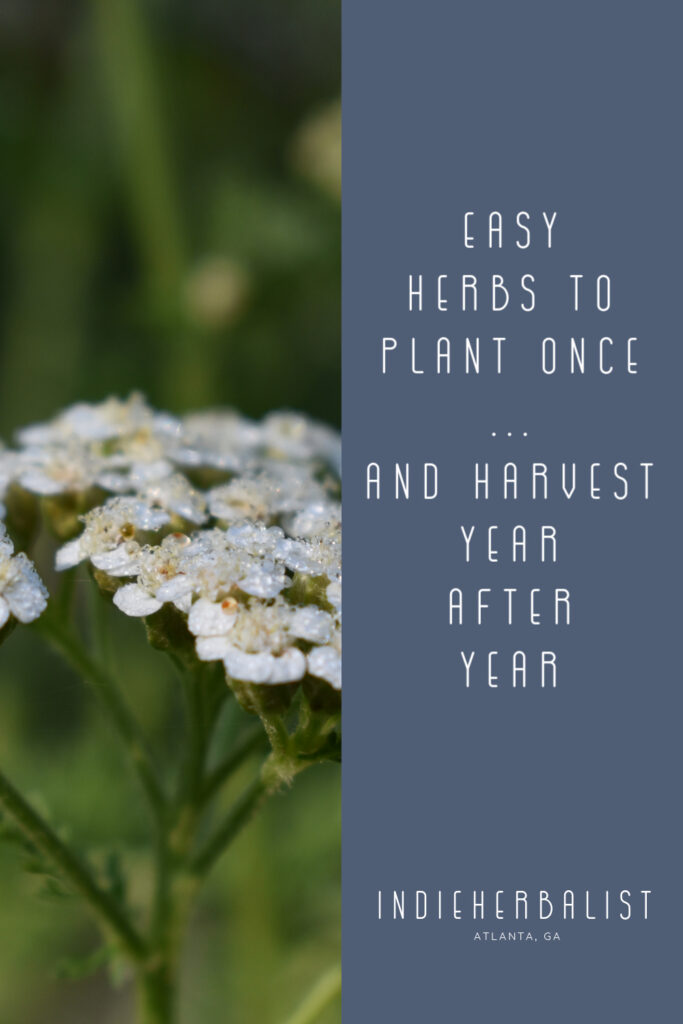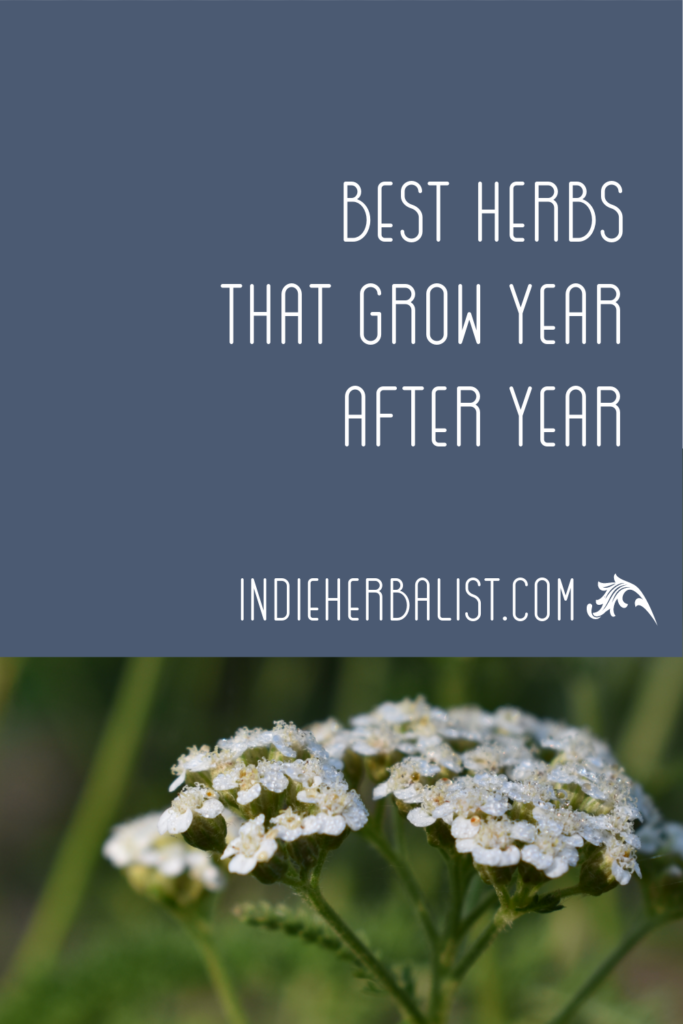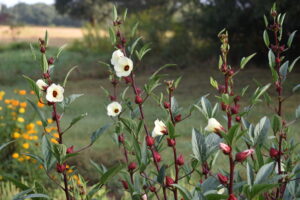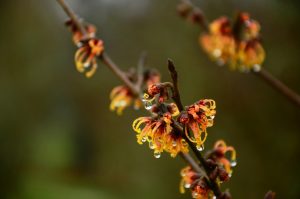Links contained in this post and elsewhere on my website may include affiliate links. When you make a purchase through these links, I earn a commission at no additional cost to you. I only link to products and services that I love - and that I think you will love, too!
These herbs for a perennial garden are some of the easiest to grow and most versatile. Perennial herbs are a good choice because they reliably appear in the garden year after year. I’ve picked out five of my favorites to share with you today. Besides being hardy and versatile, these plants will grow almost anywhere. All of these herbs can be grown in zones 3-9 in the United States.
Caring for herbs for a perennial garden
Perennial herbs are known for being easy to grow. Once they are established, they mostly take care of themselves. Several of them like regular water and a good mulching-in can really help them in dry weather.
You can top dress with compost every few years if you like. But other than making sure basic things like water and enough light are taken care of, you won’t need to do anything fancy to keep these plants happy. Here are my top five herbs for a perennial garden!
Yarrow
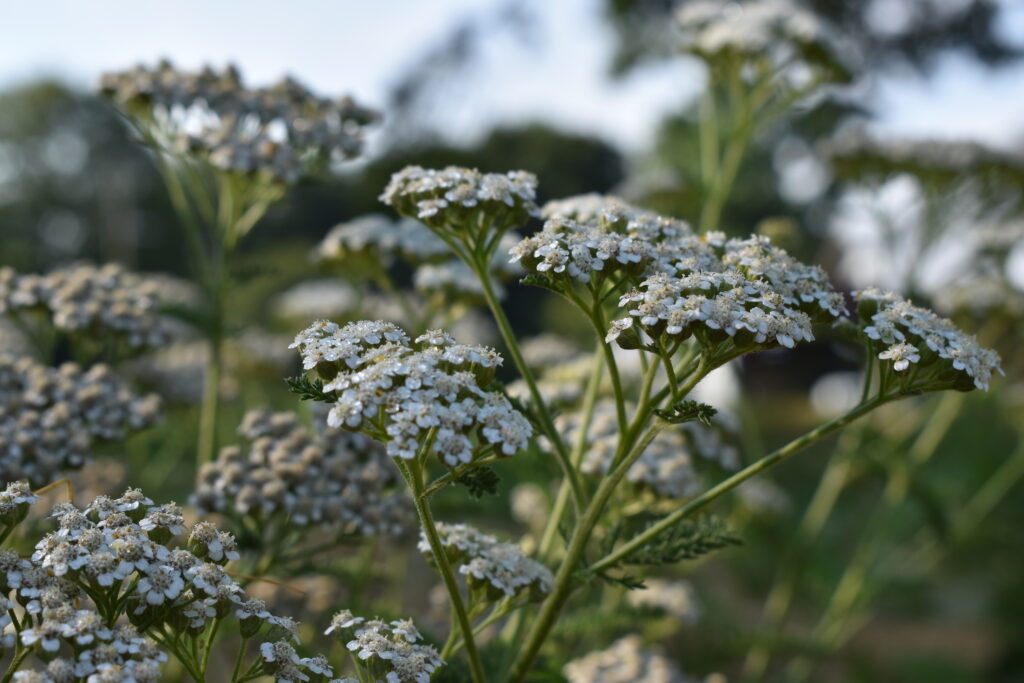
Achillea millefolium
Yarrow grows in a low clump and the flower stalks get about 2 feet tall. If you can, find the official, white yarrow and stay away from cultivars (the fancy kinds that are bred to be pretty). Although they can be beautiful, they may or may not have the same properties as the original yarrow.
Yellow yarrow is a different species altogether, Achillea fillipendulina, and to my knowledge, it’s not used in herbal medicine.
Once yarrow is established in your garden, it will spread into a hardy patch. You can weed out the edges to keep it contained neatly in one spot or let it grow where it pleases. Yarrow will grow in rich garden soil, but the scent (and the actions of the plant) will be stronger if you let it tough it out in dry, poor soil. Yarrow thrives in challenging conditions!
Curious about when to harvest yarrow? Learn more here.
Lemon Balm
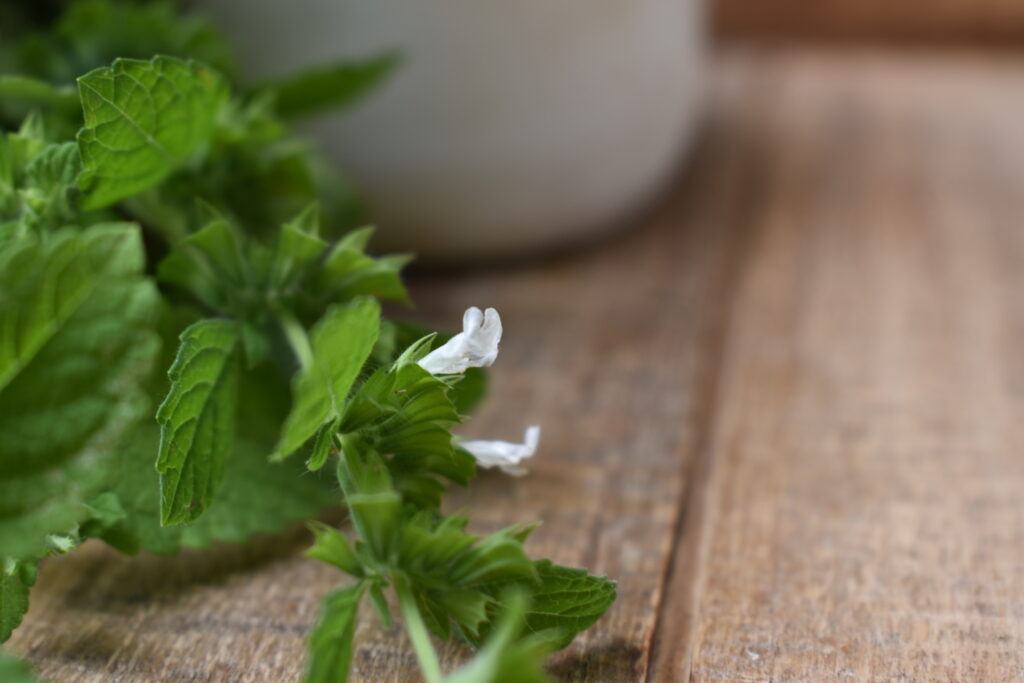
Melissa officinalis
Lemon balm is a beautiful member of the mint family. Bees love it. Besides its herbal uses, it makes a yummy iced tea in the summer.
Consider growing lemon balm in a large container to keep it from running rampant! I’ve even seen lemon balm choke out daylilies – considering how tough and weedy daylilies are, that’s no small feat.
It likes afternoon shade but can adapt to a wide variety of growing conditions. Don’t be surprised if lemon balm doesn’t smell like much early in the growing season. My lemon balm usually has no scent when it first emerges in the spring, but by the time it is ready to bloom it develops the heady scent that is characteristic of this herb.
Hops for a perennial garden
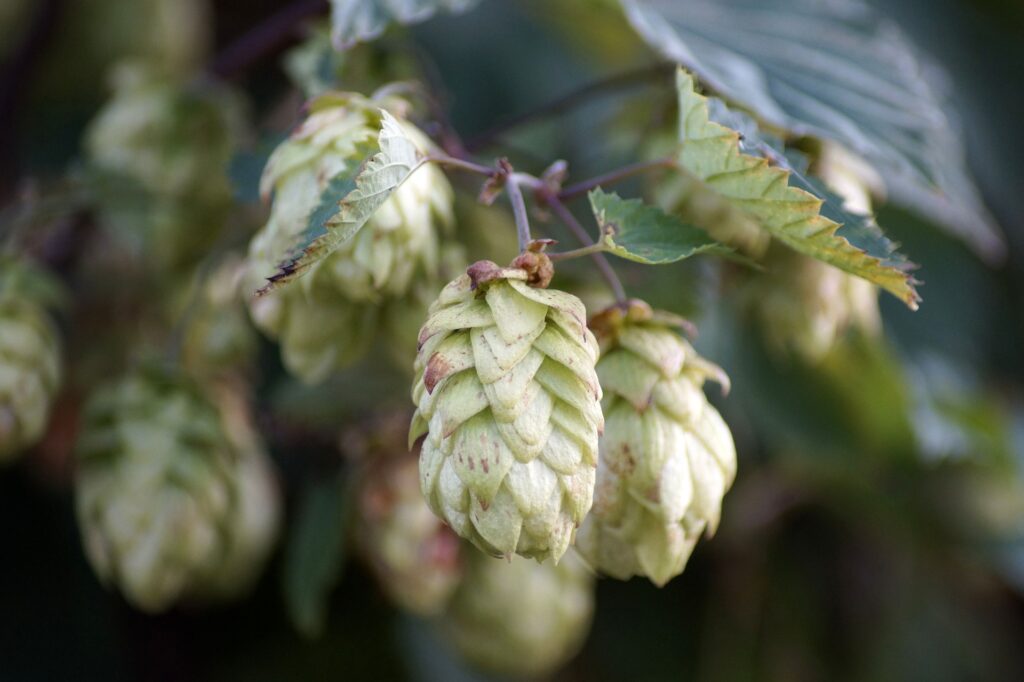
Humulus lupulus
Hops is a favorite of home brewers, but also prized by herbalists as a nervine. It’s a climbing plant, although it is technically a bine and not a vine. It uses stiff bristle-like hairs to twine the whole stem around a support instead of having tendrils that grab hold.
Hops flowers are actually cones. If you examine them up close you will notice that they look like paper lanterns reminiscent of a pine cone. It is a beautiful plant to grow on an arbor or arch for summer shade. At the very least, it needs a post and wire or other vertical support to be at its best.
The bines die back in the winter and you can cut the stems down to keep things tidy. 8 Questions and Answers All About Hops at Stark Bros has some great info on growing hops.
Elecampane
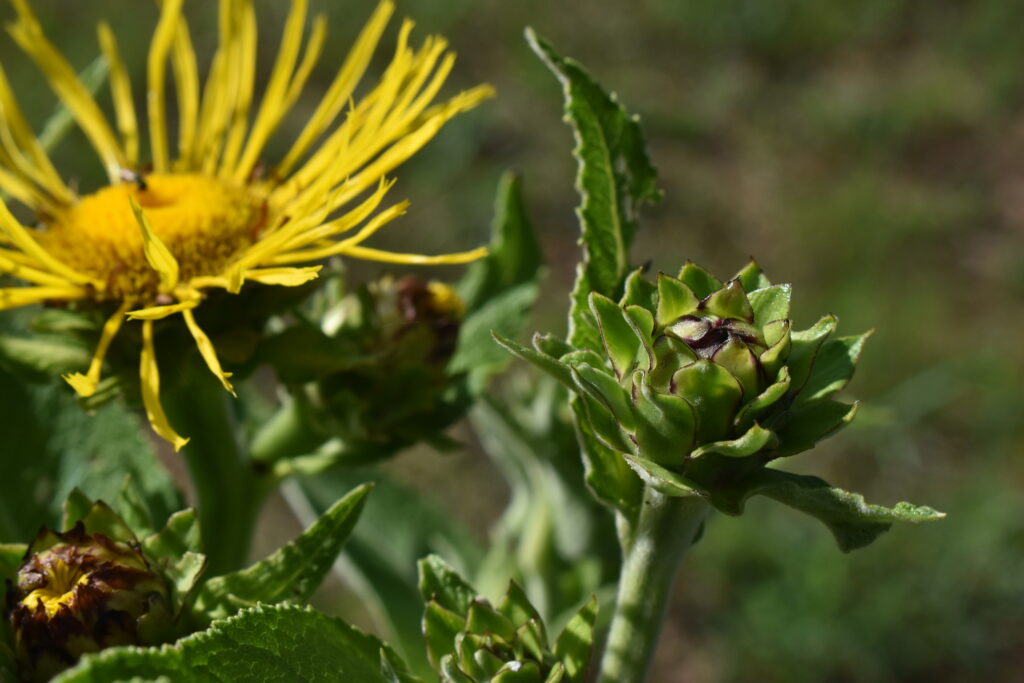
Inula helenium
Like yarrow, elecampane is one of my essential herbs for a perennial garden. The roots have myriad uses and it’s a gorgeous, prolific addition to the garden. Elecampane is a respiratory support herb, nervine, and carminative.
This plant gets rather large, up to five feet tall, but it only needs about 2 feet of space for width. It’s easy to start from seed or you can start with one plant and make more by cutting pieces of the roots and planting them to grow new plants.
Elecampane doesn’t like overly dry conditions, so do make sure it gets enough water during dry spells. I love the cheerful yellow flowers and the stately presence of this plant even when it’s not in bloom. In the winter the leaves turn brown and wither, but it will come back if you leave some of the roots for next year.
It’s best to harvest the roots just as the leaves are turning brown, when they are largest. A single plant will yield a handsome harvest, so adding even a few plants to your garden can give you plenty of material to work with! Elecampane is traditionally used as a lung tonic and as a digestive bitter.
Motherwort
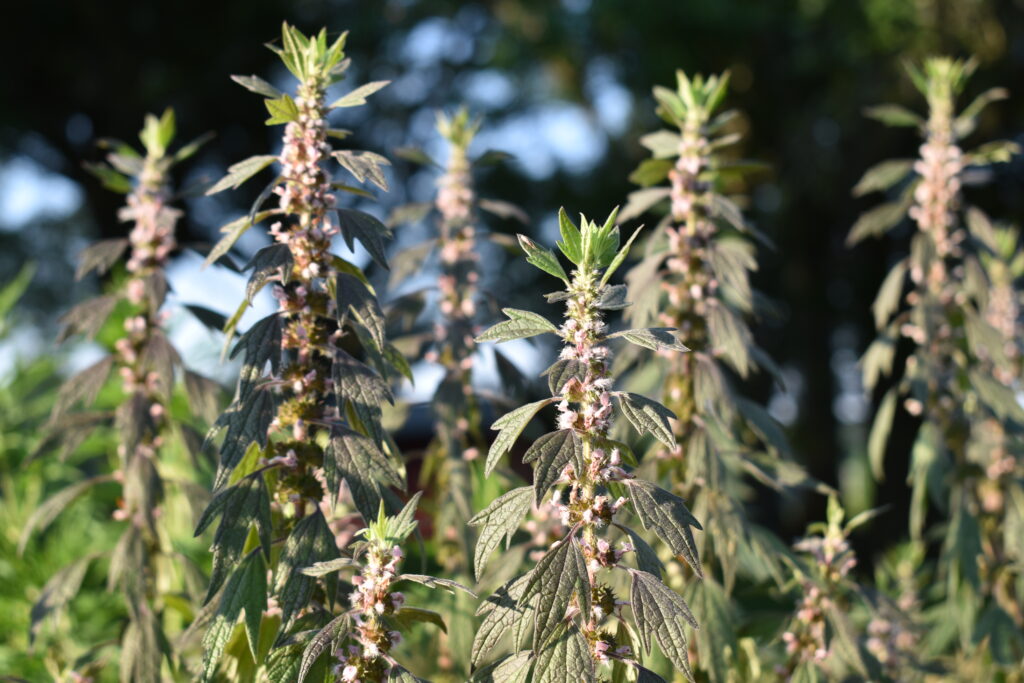
Leonurus cardiaca
Although it is often thought of as a “women’s” herb, motherwort is also an admirable nervine and digestive support herb.
Motherwort seeds need stratification (alternating warm and cool weather) to germinate, so it can be best to plant them outdoors in the fall if you want to grow them from seed.
This is a beautiful perennial to grow for show as well as for all of its traditional uses – the plants have blue flowers, and the leaves bend downward in a way that I think is very demure and charming. The leaf shape is also very unusual – it actually changes as you go down the stalk, so that there are several different types of leaves present. Motherwort is a versatile bitter and nervine.
Read my article about growing motherwort here.
This article has more information on the herbal uses of motherwort.
More of my top picks for beginner herb gardens
I love writing about herb gardening, so there are plenty of articles to browse here on the blog. Once you’ve read about herbs for a perennial garden, you may be curious about annuals. Annuals have their place in the herb garden too. In fact, these annuals are a good place to start because they are easy to grow from seed.
You might also enjoy my article on 5 Herbs That Grow Almost Everywhere.
